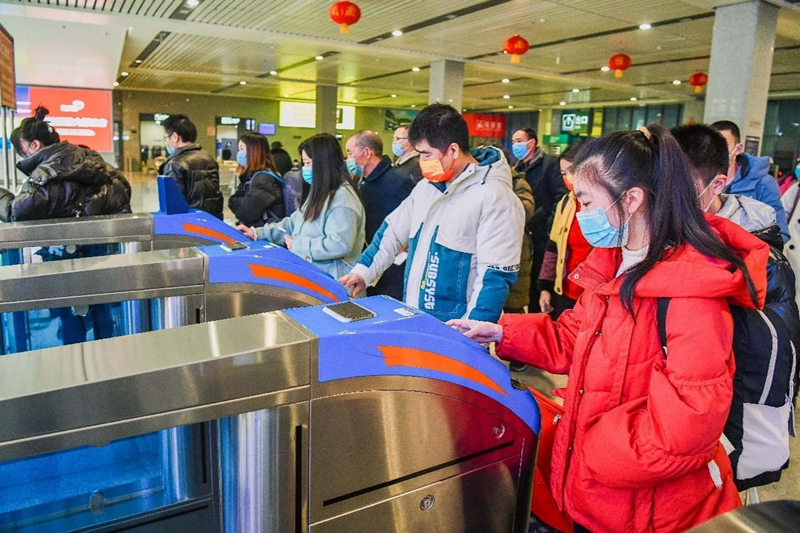
Cardboard, paper and magnetic tickets are on display at a museum in Shijiazhuang railway station, the forerunners to today’s intercity e-tickets.

A passenger buys a ticket at Nanjing Railway Station in Jiangsu Province, East China on Christmas eve 2022. (Photo by Su Yang/People's Daily Online)
The museum in the Hebei Province capital city shows how China’s trains and train services have been constantly upgraded from yesterday’s paper to today’s paperless tickets.

Travelers scan their national identity cards to pass through Qijiang East Railway Station checks in Southwest China's Chongqing municipality on January 7. (Photo by Chen Xingyu/People's Daily Online)
Once upon a time, the vendor personally wrote out all the information on the first generation of cardboard tickets.
Then in the 1990s they were replaced with a soft red computer-printed paper ticket. The vendor now only had to type in the date and train number.

A high-speed train runs over the Daning River in Wushan county, Southwest China's Chongqing municipality on January 7. The bridge is a section of the Zhengzhou-Chongqing high-speed railway. (Photo by Wang Zhonghu/People's Daily Online)
In 2008 a blue magnetic ticket was introduced for the Beijing-Tianjin high-speed intercity railway. The ticket could be passed through automatic gates.
Digital technologies including facial recognition have been added to today’s electronic train tickets.
In the past people lined up all night for a ticket home. Today they go online to find a ticket.
Chinese mainland passengers with e-tickets can pass through barriers by simply scanning their national identity cards, saving time and reducing ticket loss problems.
In 2022 multi-ride and periodic tickets were unveiled for the Kunming-Mohan section of the China-Laos Railway for business travelers and commuters.
A code-scanning service has been introduced to more than 3,200 high-speed trains where passengers can obtain Chinese language travel information and services about their trips.
Over the past decade China's railway network has grown in size and quality. Rail transport has reached a new level with more advanced equipment and technology.
More than two-thirds of the world’s high-speed railway is in China. China had 150,000 kilometers of railway by the end of 2021.


